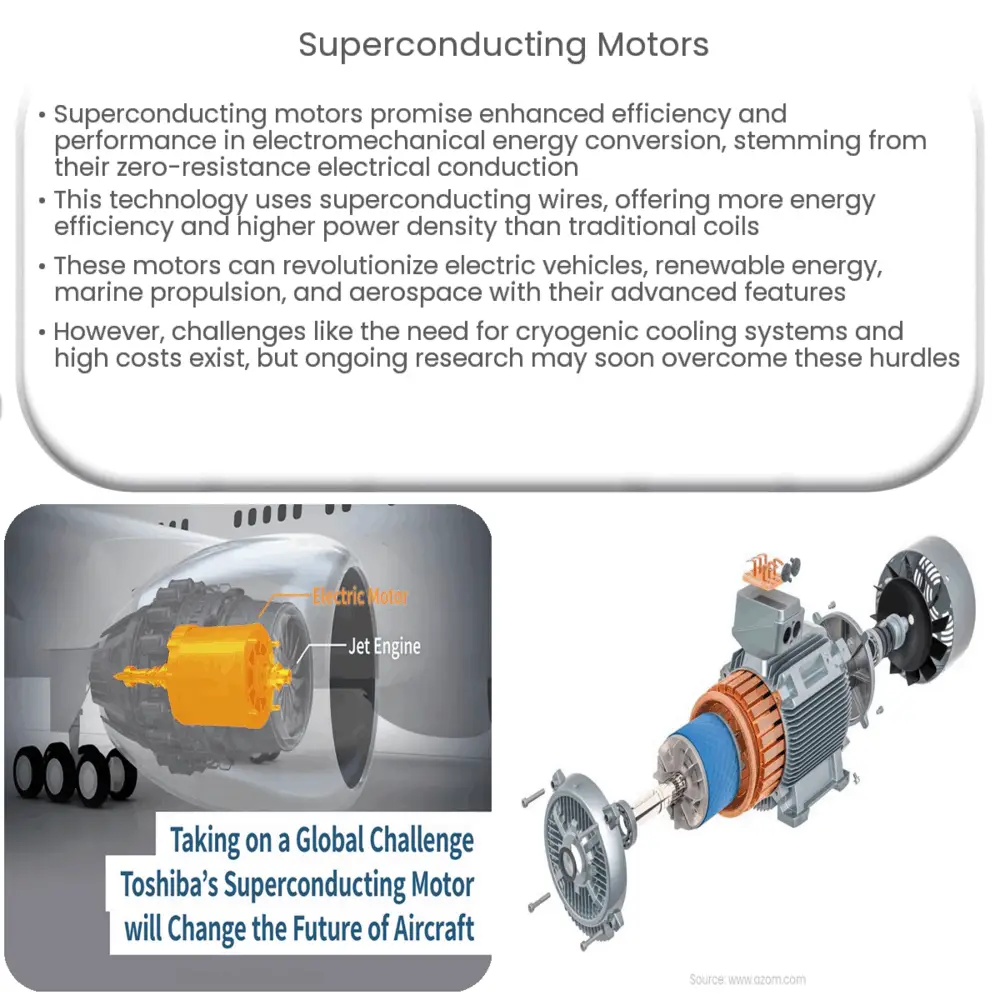Explore the revolutionary world of superconducting motors, their types, advantages, applications, challenges, and potential future impact.

Introduction to Superconducting Motors
Superconducting motors, a promising technological development in the realm of electromechanical energy conversion, offer an unparalleled degree of efficiency and performance. At the core of this advanced machinery lies the fascinating property of superconductivity, an aspect of quantum physics that has triggered a revolution in numerous industries.
The Principle of Superconductivity
Superconductivity is a phenomenon wherein certain materials, at extremely low temperatures, can conduct electric current with zero electrical resistance. This quantum mechanical marvel, first discovered by Heike Kamerlingh Onnes in 1911, holds the key to eliminating energy losses, thus providing significant advancements in electric motor technology.
How Superconducting Motors Work
In simple terms, superconducting motors employ coils made of superconducting wires rather than conventional copper coils. When these wires are cooled to cryogenic temperatures, they exhibit superconductivity, enabling the motor to operate with exceptional energy efficiency. Moreover, superconducting wires can carry substantially larger currents than copper wires of the same size, leading to increased power density and a more compact motor design.
Types of Superconducting Motors
- Low-temperature superconducting motors (LTS): These motors utilize low-temperature superconducting materials like niobium-titanium (NbTi) and niobium-tin (Nb3Sn), which become superconducting at temperatures below 10 Kelvin (-263.15 °C).
- High-temperature superconducting motors (HTS): Although high-temperature is a relative term, these motors use materials like Yttrium Barium Copper Oxide (YBCO) that exhibit superconducting properties at ‘warmer’ temperatures, around 93 Kelvin (-180.15 °C).
The Advantages of Superconducting Motors
By virtue of their zero-resistance electrical conduction, superconducting motors offer numerous advantages. These include enhanced energy efficiency, higher power density, reduced size and weight, and the potential for lower lifecycle costs. They are, therefore, considered the next step in the evolution of electric motor technology.
Applications of Superconducting Motors
Superconducting motors are poised to transform various industries with their superior capabilities. Here are a few applications where these motors can potentially bring significant improvements:
- Electric Vehicles: Given their high power density and compact size, superconducting motors could be instrumental in the advancement of electric vehicle technology. They can lead to increased range and performance while minimizing weight and space requirements.
- Renewable Energy: Superconducting generators in wind turbines can drastically enhance their power generation efficiency and reduce their physical footprint. This could be a game-changer for the renewable energy sector.
- Marine Propulsion: Superconducting motors can also be utilized for marine propulsion systems. Their high power density and compact form factor can contribute to more efficient and eco-friendly ship designs.
- Aerospace: The aerospace industry can also benefit from superconducting motors, especially in electric aircraft propulsion. They can pave the way for more sustainable air travel.
Challenges and Future Prospects
Despite the immense potential, the wide-scale adoption of superconducting motors does face challenges. The need for cryogenic cooling systems to maintain superconductivity adds complexity and cost to the design. Moreover, HTS materials, despite their ‘warmer’ operating temperatures, still require liquid nitrogen for cooling, which brings its own set of logistical challenges. Nevertheless, ongoing research aims to address these issues, and breakthroughs in materials science could potentially lead to the development of room-temperature superconductors.
Conclusion
Superconducting motors, with their unprecedented energy efficiency and power density, stand at the forefront of a new era in electromechanical energy conversion. While challenges persist, the potential benefits they offer are undeniable. As technological advancements continue to push the boundaries, these extraordinary machines could very well become the heart of various industries, from transportation to renewable energy generation, ushering in a new age of efficiency and sustainability.

